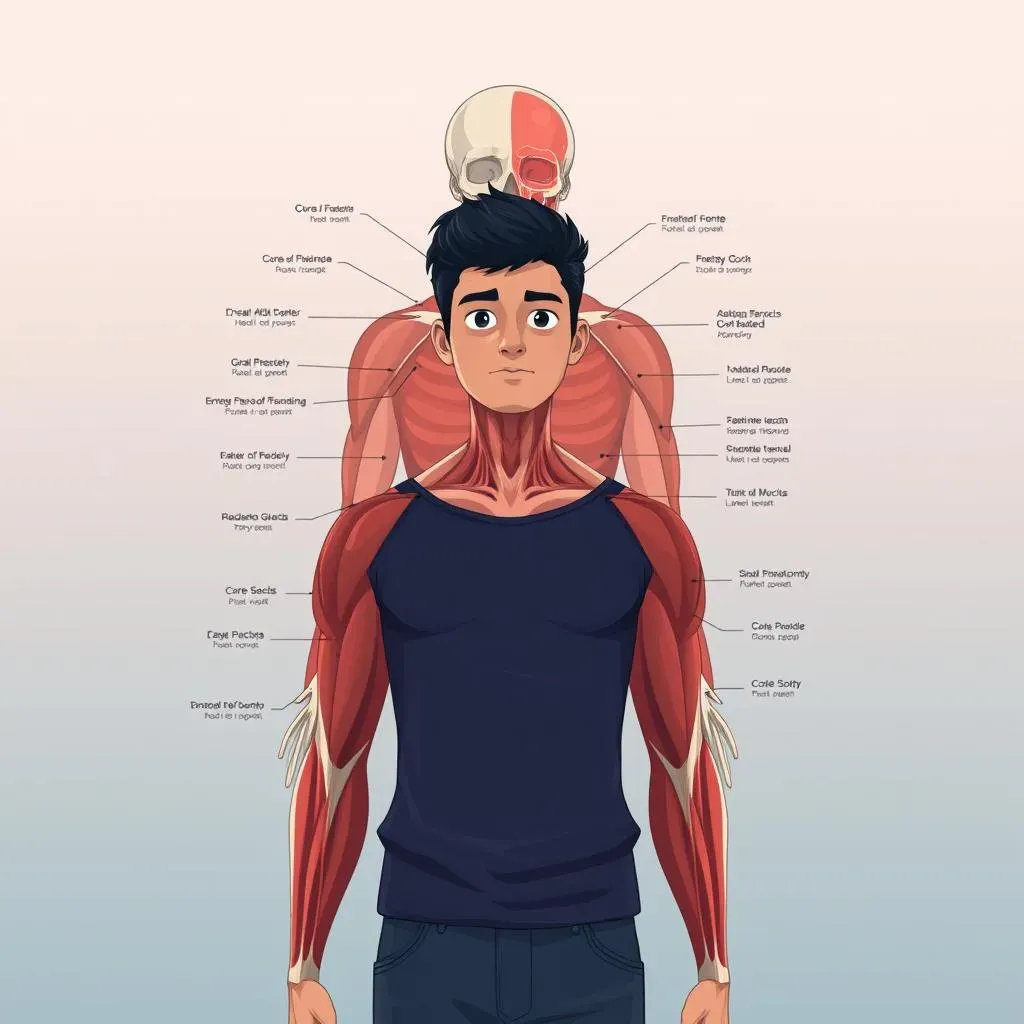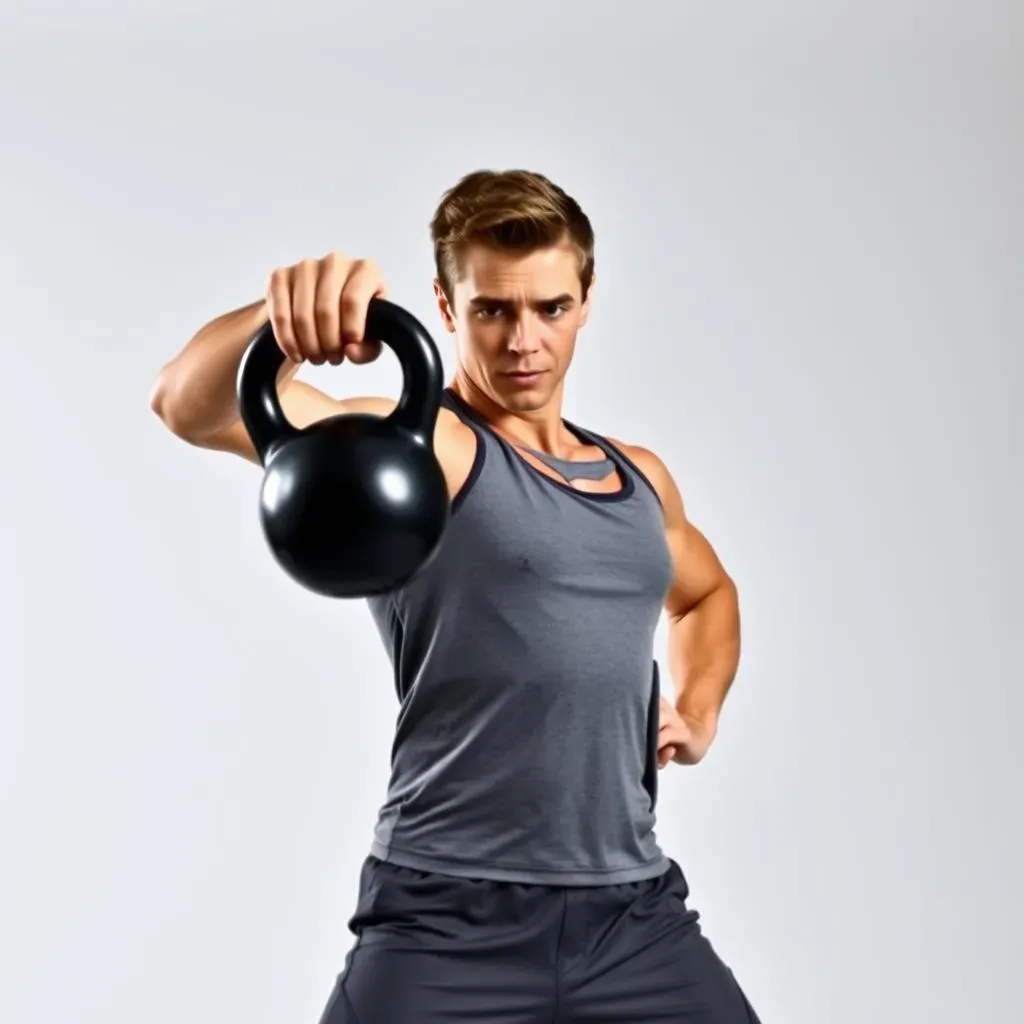Table of Contents
Are you tired of endless crunches that don't seem to do the trick? It's time to shake up your routine and discover the power of kettlebells for a rock-solid core. Forget those boring sit-ups; we're about to explore how a simple kettlebell can transform your abs workout. We'll go over the different muscles that make up your core, because it's not just about those six-pack muscles, and then we'll get into some really effective kettlebell exercises that will actually work those muscles. We’ll also talk about how to do these moves correctly. It is not enough to just swing a kettlebell around. We'll also cover why building a strong core matters, it's not just about looking good. This isn't just another fitness article; it's your guide to a stronger, more stable you, all with the help of a kettlebell. Get ready to see how an "abs workout with kettlebell" can be a game-changer!
Understanding Your Core Muscles

Understanding Your Core Muscles
The Core Isn't Just Your Abs
When most people think of their core, they picture a six-pack, right? But there's so much more to it than just that. Your core is like the powerhouse of your body, a complex system of muscles that work together to keep you stable, balanced, and strong. It’s not just about showing off your abs at the beach; it's about how your body functions every day.
Think of it as the foundation of a building. If the foundation is weak, the whole structure suffers. Your core acts the same way, if you have a weak core, it can lead to poor posture, back pain, and even injuries. So, understanding these muscles is key to a better overall fitness level.
Key Core Muscles
so let's get into the nitty-gritty. What muscles are we actually talking about? You've got your rectus abdominis, those "six-pack" muscles, they're responsible for flexing your spine. Then there’s the transverse abdominis, a deep muscle that acts like a natural corset, stabilizing your spine and abdomen.
And don't forget the obliques, internal and external, on the sides of your torso, they help with twisting and bending movements. Lastly, there's the pyramidalis, a small triangular muscle that assists in flexing the pelvis. These muscles work together like a well-oiled machine, and understanding how each contributes to overall core stability is crucial for effective training.
Muscle Group | Function |
|---|---|
Rectus Abdominis | Flexes the spine (the six-pack) |
Transverse Abdominis | Stabilizes spine and abdomen (natural corset) |
Obliques (Internal & External) | Twisting and bending movements |
Pyramidalis | Assists in flexing the pelvis |
Effective Kettlebell Exercises for Abs

Effective Kettlebell Exercises for Abs
so you've got the core muscle anatomy down, now let's get to the fun part: using kettlebells to work those abs! These aren't your standard crunches. Kettlebells add a whole new dimension to core training by engaging more muscles and challenging your stability. We're talking about functional strength that translates to real-world movements, not just a pretty six-pack. These moves aren't just about lifting a weight; they are about controlling it while engaging your entire core.
We're going to cover some seriously effective exercises, from the dead bug that looks easy but is deceptively challenging to the Turkish get-up that's a full-body workout disguised as an ab exercise. Think about this: every time you're fighting to control that kettlebell, your core is working overtime. It's like getting a two-for-one deal: strength and stability. So, grab your kettlebell, and let's dive into these moves that'll have your abs screaming for mercy (in a good way, of course!).
Here are some of my favorites:
- Dead Bug
- Suitcase Carry
- Goblet March
- Woodchop
- Plank Row
- Goblet Squat
- Kettlebell Swing
- Windmill
- Turkish Get-Up
Each of these exercises hits your core in a slightly different way, making sure you're working all those important muscles we talked about earlier. It's like having a full-body orchestra, with your core as the conductor.
Proper Form and Technique for Kettlebell Abs Workout

Proper Form and Technique for Kettlebell Abs Workout
so you’re pumped to swing some kettlebells, right? But hold up a sec. Before you go all out, let's talk about form. Proper technique isn't just about looking good; it's about avoiding injury and making sure you're actually working the right muscles. It’s like learning to play an instrument, you can't just bang on the keys, you need to know the right notes and how to play them. With kettlebells, it's the same. If you’re not doing it right, you're not going to get the results you want, and you might end up hurting yourself. Think of it as building a house, you need a strong foundation, proper alignment, and the right tools.
So, what does good form actually look like? Well, it varies a bit depending on the specific exercise, but there are some general rules. First off, keep your core engaged. This means pulling your belly button towards your spine, it helps to stabilize your body. Think about it like wearing a built-in weight belt. Also, make sure you're moving through a full range of motion, but don't force it. If something hurts, stop. It's better to do fewer reps with good form than a ton of reps with sloppy form. Also, breath. It seems silly, but so many people hold their breath when they lift, that's not good.
Key Form Points | Why It Matters |
|---|---|
Engage Your Core | Stabilizes your spine, prevents injury |
Full Range of Motion | Maximizes muscle engagement |
Controlled Movements | Prevents momentum from taking over |
Listen to your Body | Avoids injury, knows when to stop |
Breath | Helps to stabilize the body |
Let's take the kettlebell swing for example. It's not a squat; it's a hinge. Your hips are the driver, not your lower back. The kettlebell should swing up to about chest height, not way over your head. And for the Turkish get-up, that’s a whole different beast. It is a complex movement, each transition requires focus and stability. Don't rush it. And for the woodchop? It's not about how much weight you can throw around. It is about controlled rotation, think about chopping wood. It’s all about control, precision and focusing on the targeted muscles, not just flinging the kettlebell around.
If you're unsure about your form, it's always a good idea to get some feedback from a qualified trainer. They can spot things you might not notice and help you make sure you're getting the most out of your workout. Think of them like a coach who can help you get better at your sport. It’s an investment in your fitness journey.
Benefits of a Strong Core and Kettlebell Abs Workout

Benefits of a Strong Core and Kettlebell Abs Workout
More Than Just a Six-Pack
so we've talked about the muscles and the moves, but why should you even bother? Well, a strong core is about way more than just looking good in a swimsuit. It's about how you move, how you feel, and how well your body functions. Think of it as the central hub of your body. It's like the engine in your car; if it's not running well, the whole car suffers. A strong core supports your spine, improves your balance, and helps you perform everyday tasks with ease. It's the secret weapon for a healthier, more functional you.
When you have a strong core, everything just feels easier. You'll find that you have better posture, which can reduce back pain and make you look taller and more confident. You'll also notice that you can move more efficiently, whether you're lifting groceries or playing sports. A strong core is like having a built-in support system, making everything from walking to jumping feel more controlled and powerful. It's about building a foundation that will support you for years to come, not just a few weeks before summer.
Real-World Advantages
Let's get down to brass tacks; how does this actually impact your daily life? Well, imagine you're carrying a heavy box. With a weak core, you might struggle, feel unstable, and risk injuring your back. But with a strong core, you'll be able to lift it with proper form, feeling stable and in control. That’s the difference a good core makes. It's not just about lifting weights in the gym; it's about how you move and function in your real life, all day long.
And it's not just about lifting things. A strong core helps with balance, which is crucial for everything from walking on uneven ground to playing sports. It also improves your posture, which means less back pain and a more confident stance. And for athletes, a strong core means improved power and performance, whether you're running, jumping, or throwing. It’s like having a secret weapon that improves everything you do. It’s the unsung hero of your body, working hard behind the scenes to keep you strong, stable, and moving with ease.
Benefit | Real-World Impact |
|---|---|
Improved Posture | Reduced back pain, more confident stance |
Enhanced Balance | Better stability in daily activities, improved athletic performance |
Increased Stability | Safer movement, reduced risk of injury |
Improved Power | Better performance in sports and physical activities |
Wrapping Up Your Kettlebell Ab Journey
So, there you have it—a complete guide to transforming your core with a kettlebell. From understanding the muscles involved to mastering effective exercises like the Turkish get-up and the windmill, you now have the tools to build serious core strength. Remember, it’s not just about the exercises themselves, but also about the proper form and technique. Start light, focus on getting each move right, and gradually increase the weight as you get stronger. A strong core is the foundation for better posture, reduced injury risk, and improved athletic performance. So, pick up that kettlebell, and make your "abs workout with kettlebell" count. You've got this!